10 DIY Yard Drainage Solutions to Protect Your Home’s Foundation
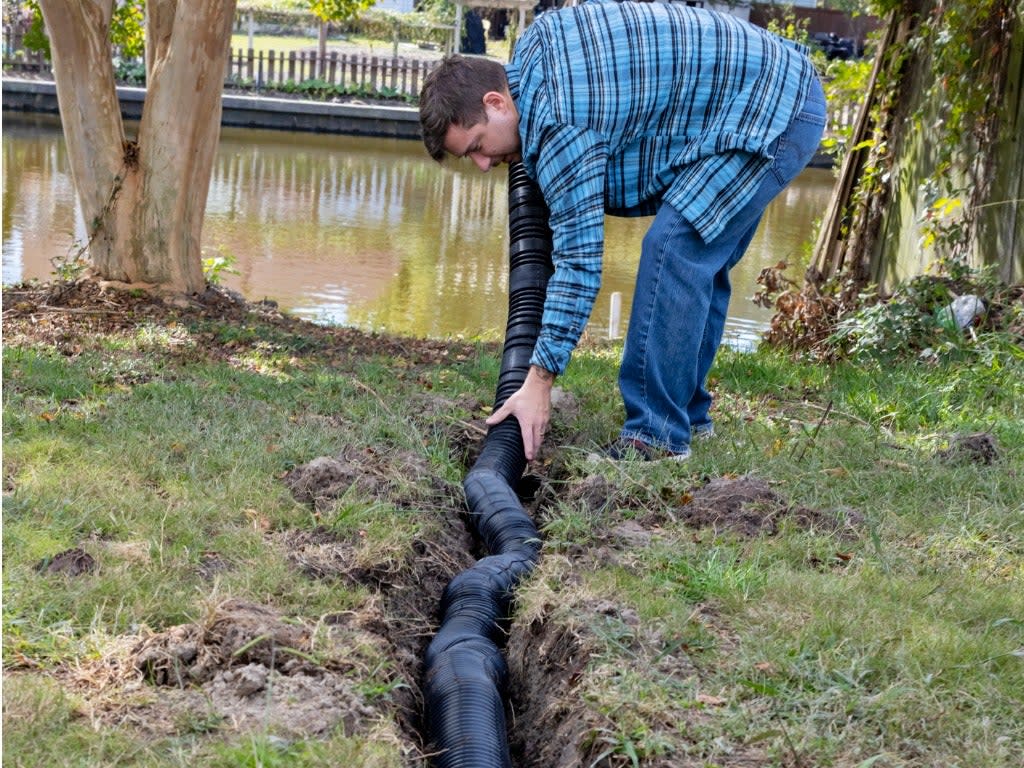
If you see standing water on your property after a hard rainfall, it's probably time to take steps to mitigate the problem. An inadequately draining yard causes a swampy mess but, more to the point, it also can pose a serious threat to the soundness of your home’s foundation. The longer you wait to solve your drainage issue, the more—and more serious—problems you might have on your property.
Ahead you'll find plenty of DIY solutions that can help solve a yard drainage issue. If you try them without success, be forewarned that your drainage problem may be severe enough to warrant a professional’s help.
Why is yard drainage important?
Poor yard drainage isn’t only an aesthetic issue. For one thing, standing water seriously jeopardizes the health of a lawn and landscape plantings. Other frustrations or dangers associated with standing water include:
Inability to enjoy your lawn
Increased populations of mosquitoes and other bugs
Risk of significant damage to your home’s foundation
Risk of basement flooding
A well-draining property slopes gently and gradually away from the house, descending 6 inches over the initial 10 feet surrounding the foundation (with another foot of slope over the next 100 feet). If your property doesn't have an adequate slope—if, say, your property actually sits below that of the neighbors’ and the street—you’ll need to consider which yard drainage system makes the most sense for your situation.
DIY Drainage Solutions for Yards
After an abnormally heavy rainfall any yard can get pretty murky, but it's not normal for a pond to form in your yard every time it rains. If that's how it is on your property, it’s time to take action. These ideas will help you divert excess water from areas of your property it poses a problem, to an area where it can more freely seep into the soil.
1. Install a curtain drain.
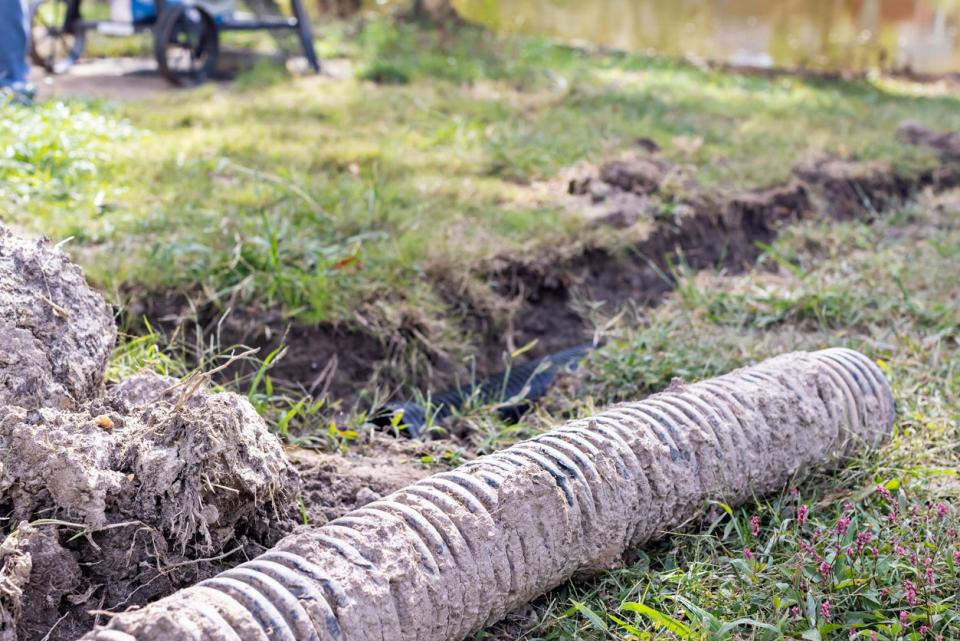
Photo: istockphoto.com
A curtain drain won’t work if your property has a lower elevation than all of the land surrounding it, but if the street or an adjacent woodland are below the grade of your flooded yard, you’re in luck.
You can set a perforated pipe into the ground, running from the problem area to the safe zone. The pipe draws in water through its holes and by the power of gravity, carries the water away from your home.
2. Dig a dry well.

Photo: istockphoto.com
If there’s nowhere it would make sense to drain the stormwater you collect, your best bet might be to install a dry well. Basically, a dry well is a holding tank for excess runoff. The container fills during a storm, then in the hours and days afterward, it drains into the soil beneath and next to the well.
One advantage of a gravel-filled dry well is that you can cover it over with soil and grass—you don't have to look at a big cement .
RELATED: Pass on Grass: 7 Ways to Landscape With Gravel
3. Install a catch basin.
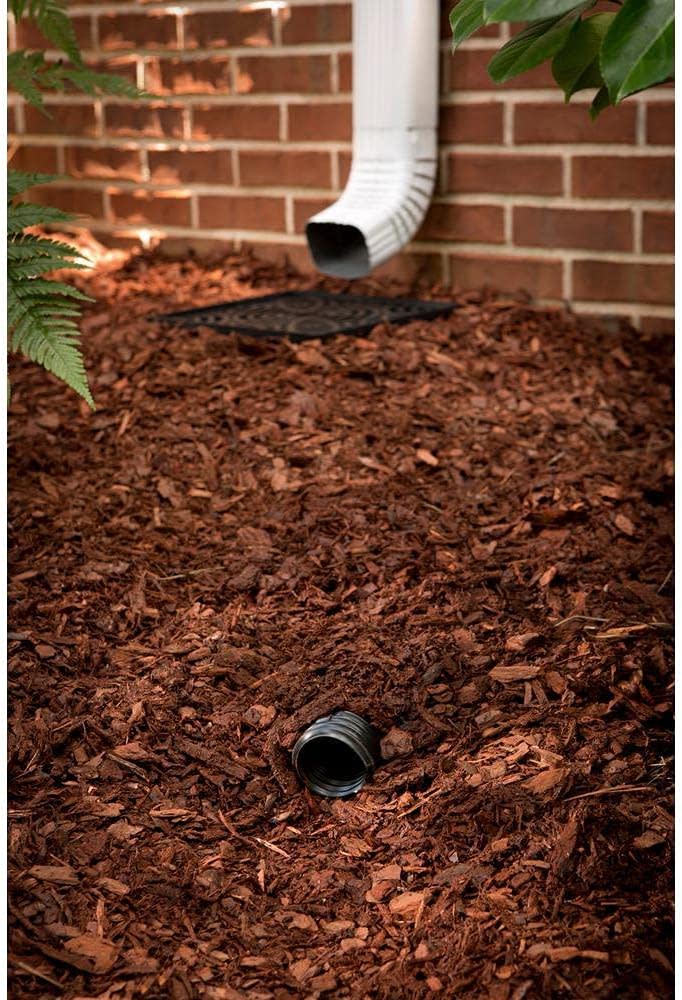
Photo: Amazon.com
A catch basin is a large vessel made of polypropylene or masonry that is mostly buried underground. It has a grate at ground level that allows water to drain into the basin. The basin also has a drainage pipe that enables water collected in the basin to flow away.
The hole that needs to be dug to hold the basin can be quite large, so you might need to rent heavy equipment or hire help to dig it.
4. Replace hardscaping with drainage materials.
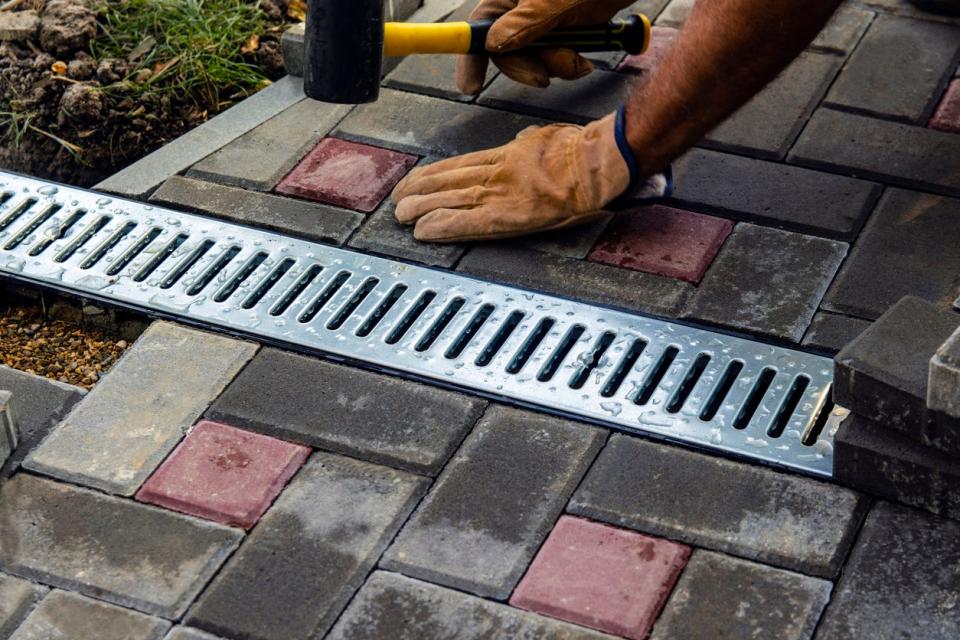
Photo: istockphoto.com
Hardscape, such as a concrete patio, is not permeable so water cannot drain through it. If you have drainage problems, consider replacing a concrete patio with paving stones and gravel, for example, which will allow water to drain through.
RELATED: The Cost of Pavers Versus Concrete, Explained
5. Use a rain barrel.

Photo: istockphoto.com
A rain barrel is a large barrel that collects water coming off your roof into your gutters. Place one or more rain barrels around your home to collect water that would otherwise drain into the area near your foundation.
You also can use the water collected in the rain barrel. Connect a hose to the barrel’s built-in spigots to use the harvested water to irrigate your flower beds or lawn.
RELATED: Solved! Is it Illegal to Collect Rainwater?
6. Build a dry creek bed.
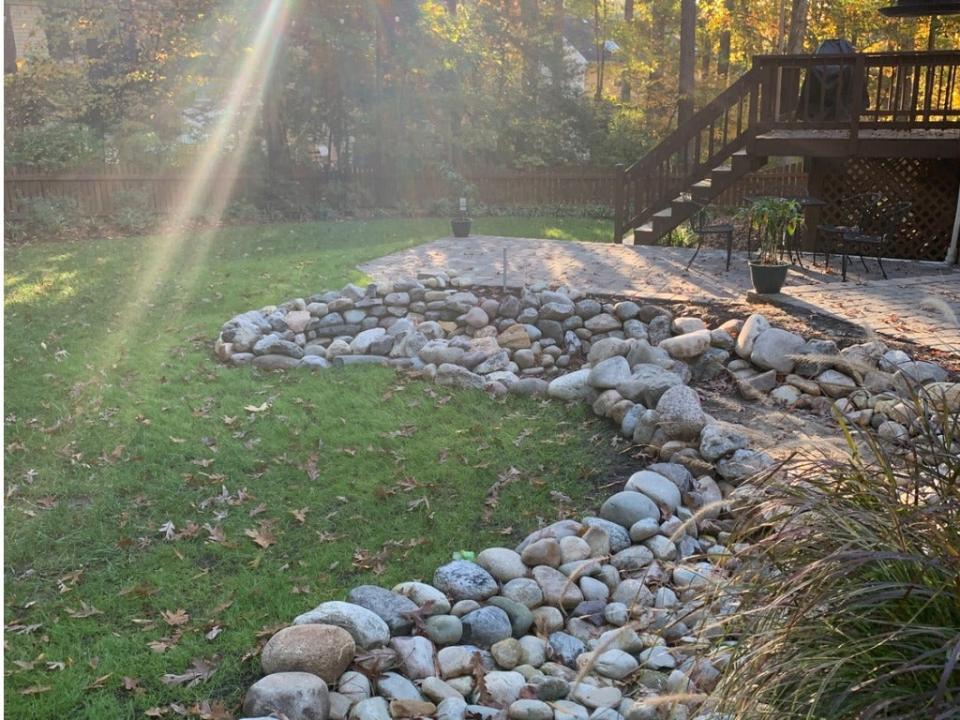
Photo: istockphoto.com
A dry creek bed has the advantage of being an attractive aesthetic addition to your yard as well as a drainage device. It involves a carefully constructed “riverbed” of stone in a meandering path leading away from the home.
Plants installed along the creek bed, along with maybe even a little bridge, give the drainage device a showstopping appeal.
7. Install a French drain.
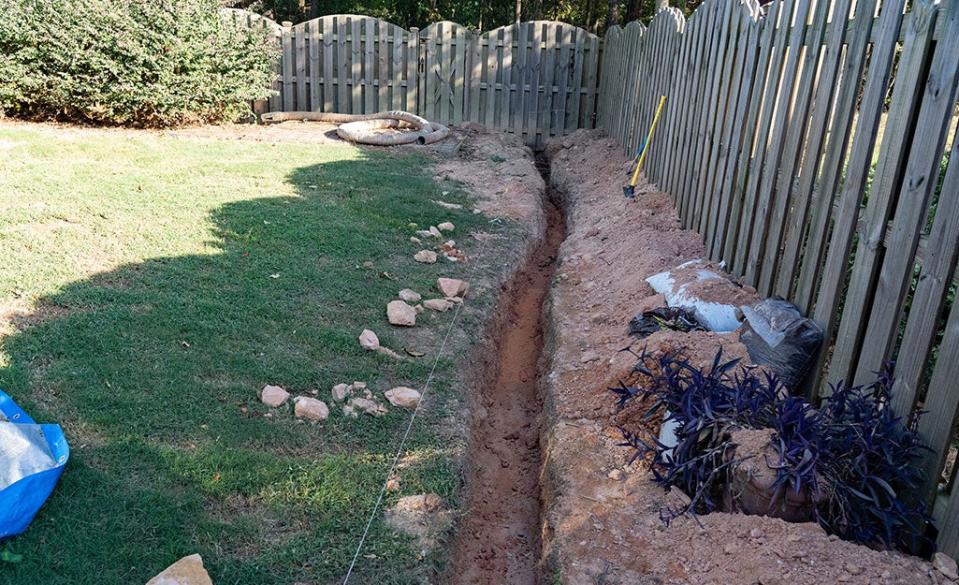
Photo: Homedepot.com
A French drain is a trench that houses a special type of perforated pipe. After the pipe is placed, the trench is covered with gravel. Water runs into the graveled trench, through the holes in the pipe, and is carried away to a part of the yard away from the house. These types of drains are great for soil around the home’s perimeter that is prone to oversaturation.
RELATED: How Much Does a French Drain Cost?
8. Aerate the lawn.

Photo: istockphoto.com
Aerating the lawn not only improves the health of the grass, but also creates a more-permeable surface that absorbs water, helping with yard drainage. Get the job done with a dedicated lawn aerator, or simply use a pitchfork to punch holes in the turf.
RELATED: Solved! Here’s Exactly When You Should Aerate the Lawn
9. Regrade your property.

Photo: istockphoto.com
This one’s a doozy that might be undertaken when other yard drainage solutions have failed or are deemed insufficient. Regrading is adding or removing soil to create a yard that slopes gently away from the foundation, so water doesn’t puddle or stream toward the foundation.
Regrading to get the proper yard drainage slope is a large-scale project that often requires big machinery and possibly professional help to ensure it’s done properly.
10. Install a sump pump.
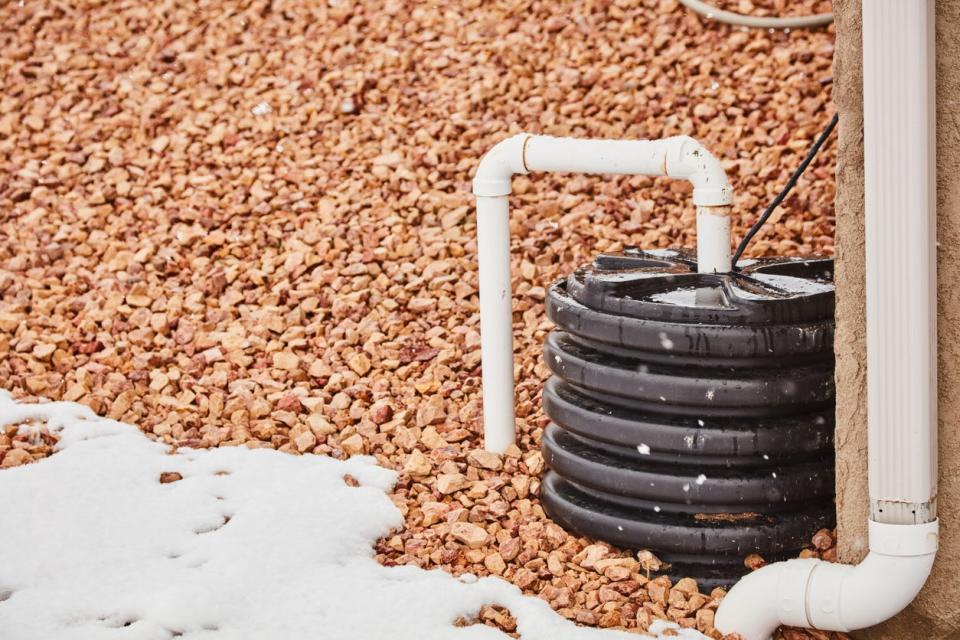
Photo: istockphoto.com
Another fairly involved solution is a sump pump, like those used to keep a wet basement dry. A sump pump corrals excess runoff and pumps it away. It can then deposit the water somewhere that’s uphill from your property.
The catch? A sump pump isn’t cheap: There are not only installation costs to weigh, but also the ongoing costs of running and maintaining the machine.
Final Thoughts
Most of these yard drainage solutions can be installed or accomplished by industrious homeowners willing to put in some sweat equity. Study the problem carefully before deciding on, and implementing, the correct solution.
If the issue seems too overwhelming, you might want to call yard drainage experts who can direct you to the best solution, which you could execute yourself, or perhaps hire out to a full-service landscaping company. Furthermore, if you suspect your drainage issues were caused by poor municipal planning, you may be able to get help from your local government. It’s worth asking!